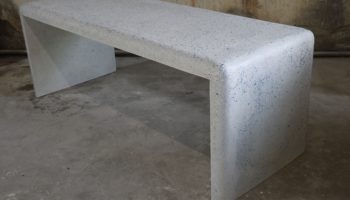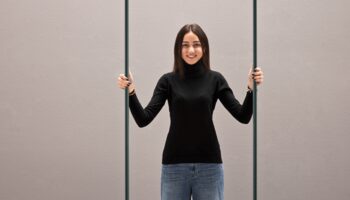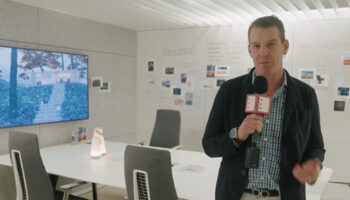George Rice’s Lasercut 4Fold Table for Formtank
Don’t you love a variation on a theme? Before you answer, allow me to re-phrase: don’t you love a skillfully modulated variation on a tried and true theme? George Rice, the UK designer whose 3fold table prompted last year’s succession of triangle-centered dialogues. And though one colleague referred to the Cootie Catcher— which shares much of its conceptual moxie with 3fold—as an “over-engineered monstrosity”—I beg to differ.
4fold Table. Designed by George Rice for Formtank.
Rice’s 3-Fold is a celebration of function meets form, a hyperbolic confirmation that, yes, the aesthetic should emerge from the utility, but also that this “utilitarian aesthetic” is wondrous in and of itself. Vladimir Rachev makes a similar gesture with the recent Shaver Task Light, a piece that, admittedly, does a bit of practiced fooling around, but also examines the relationship between the look of a piece and its intended use, and how the one informs the other. 3-Fold traveled in similar intellectual terrain while also wearing its triangular heart on its sleeve. Now 4foldlow, Rice’s most recent achievement, joins Formtank’s 2d3d line, contributing a singular essential addition: that’s right, a fourth fold.




And though the humorist in me immediately thinks of the perpetually multiplying blades of the latest disposable shavers (“if four blades are good, than five have to be better!”), my inner pragmatist is eminently susceptible to 4fold’s charms, especially as articulated by Formtank: “From a 2 dimensional plan springs a 3 dimensional form—4foldlow is the stunning new table by George Rice… Cut and folded from a single sheet of steel, 4foldlow, like the entire 2d3d Group of tables, has been reverse-designed from standard sheet steel to optimize yield and minimize waste.”
Rice’s influences and interests expound this explanation. Long fascinated with both the technical precision of aeronautics engineering and the graceful manipulations of Japanese origami, he employs these seemingly divergent disciplines at both the conceptual and production phases of 4fold, crafting a utilitarian piece with a pronounced industrial aesthetic that also articulates an ethos of sustainability. A quick mathematical calculation gives the proof to this claim, since the reverse design results in eight tables from one standard sheet, thus reducing waste to a mere 3.5%.
The incontrovertible truth, therefore, is that 4fold is “under-engineered,” or “aptly-engineered,” nothwithstanding the somewhat crotchety claims of my erstwhile co-worker. To whom I’ll say now—wherever she may be—“monstrous” may be in the eye of the beholder, but when I look on Rice’s 4foldlow I see an alluring marriage of conceptual panache and creative flair, of materials science and mathematical savvy, of new world empiricism and old world elegance.. need I go on?




Leave a Reply